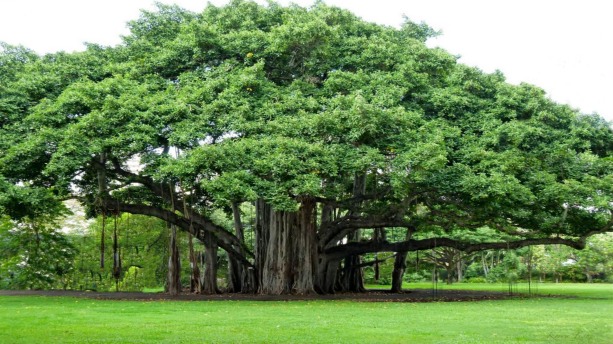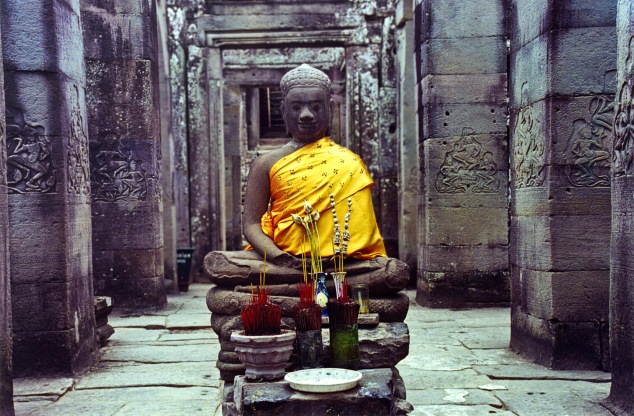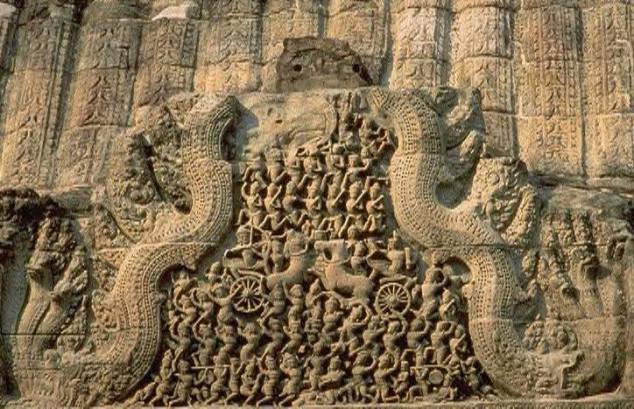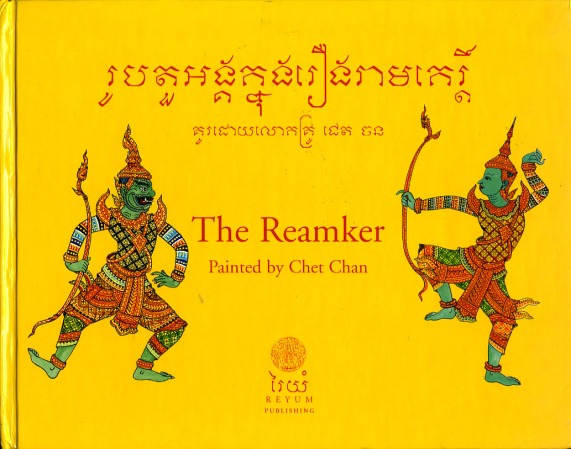Vaddey Ratner recounts the suffering and loss of the Cambodian people at the hand of the Khmer Rouge regime between 1975 and 1979 in her novel, In The Shadow of the Banyan. Countless metaphors and mythological stories are used to teach the main character, Raami, important lessons, morals, and in order to help an innocent child understand the atrocities she is enduring. Recurring themes include the banyan tree, Buddha statues, tevodas, wings, and stories. Through these motifs, Raami survives the genocide that had so abruptly destroyed her childhood and sent her country into despair.
In the novel, the banyan tree is a symbol of protection, stability, and most importantly—Cambodia. The most powerful, and recurring, quote that uses the banyan tree as a metaphor states, “There will remain only so many of us as rest in the shadow of a banyan tree” (Ratner). First used as foreshadowing, and then as confirmation of the prophecy that “a darkness would settle upon Cambodia” (Ratner). This prophecy, be it mythology or truth, is challenged by Raami when, near the end of the novel, she abandons all hope and by stating “Neither was there a sacred tree [banyan] under whose shade we’d be safe” (Ratner). Although she believes all is lost, she directly states that the banyan is a symbol of safety.
Buddha statues symbolise holiness and play a large role in the connection between life before the regime and the new life under the authority Khmer Rouge. One powerful quote shows both of these symbols: “Everyone kept a respectful distance from the fallen Walking Buddha statue, avoiding the ground above its head. Some of the elders, their palms in a sampeah, bowed and muttered a prayer. The boy soldiers leading us showed no such deference. Earlier one had spat on the trunk of the banyan tree and now the other was blowing his snot on the ground just as he passed the statue” (Ratner) This quote shows the differences between the respect the Cambodians have for the holy Buddha statue—a respect rooted in their lives long before the regime—and the indifference and disrespect the Khmer Rouge holds for the Cambodians and their beliefs.
Tevodas are, as described by the Mythology Dictionary, “One of the blessed living in Indra’s Paradise or living in the forest to record the sins of humans” (Tevoda). In the novel, a tevoda is a reappearing symbol of beauty, hope, an angel, and “as with all things spectral, they live in our imaginations” (Ratner). In the story, as Raami grows, changes, and matures, the tevodas become more than just mythological creatures: “Tevodas, it was clear to me now, were not celestial beings at all but earthly things, beautiful things I saw every day, and what made them beautiful was precisely that they were momentary, just a glimpse here and there before vanishing again” (Ratner). Tevodas are symbols of hope that me may one day have a beautiful and heavenly world.
Throughout the novel, Vaddey Ratner uses wings and stories interchangeably. Wings to symbolise freedom, and stories so that Raami could understand life, its difficulties and beauties. Raami’s father states that, “I write because words give me wings…wings! So I can fly! …Be as free as that hawk!” (Ratner). Wings are constantly used to show the characters desire to be free, or to show when someone lacks freedom: “Oh, my brother, what have you done? You’ve clipped your wings” (Ratner). This quote is showing how a character has given up his freedom by sacrificing himself. Moreover, wings and stories are used to symbolise freedom through hardship: “I told you stories to give you wings, Raami, so that you would never be trapped by anything—your name, your title, the limits of your body, this world’s suffering.” Raami was told countless stories over the course of the novel which dealt with mythical creatures, animals, people—their issues and how they were overcome—so that she may understand how she could apply the wisdom of those creatures and animals to reality.
Bibliography
Ratner, Vaddey. “In the Shadow of the Banyan.” Simon & Schuster, 2012. iBooks.
“Tevoda.” Mythology Dictionary. Web. 04 Jan. 2015.
*None of the images on this page belong to me. They were taken from various sites on the Internet.




